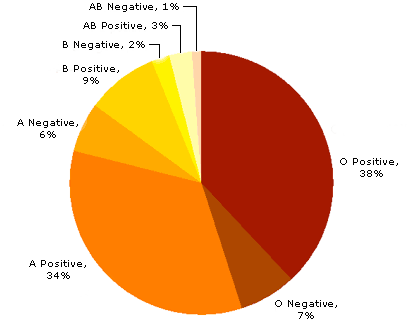Is there any reason for why the O blood group is rear compared to other blood group?
3 Answers
No specific antigen.
Explanation:
Blood grouping is made on the basis of the antigen in RBC and the antibody in plasma. In A group persons antigen A is present with antibody for b. Likewise B group persons have B antigen in RBC and antibody a in their plasma. AB group persons have both Aand B antigen while O group persons dont have Antigen or we can say Zero antigen denoted by O.
O blood group is RARE because only genetically double recessive people express this trait.
Explanation:
ABC blood group is determined by three alleles: any two alleles are present in each individual. Allele for antigen A, allele for antigen B are co dominant; hence when these come together, AB blood group is expressed. Both allele for antigen A and antigen B are dominant on recessive allele i . O blood group is expressed when there is ii genotype: i.e. in double recessive genetic condition. This is why persons with blood group O are rare in population.
The O blood group is not rare, it is the most common blood group. The AB blood group is the most rare.
Explanation:
The group O allele produces a lack of an A or B antigen on the red blood cell, which are called blood group alleles. Even though two recessive alleles are needed to produce the O blood group, the O allele is the most common of the ABO blood groups. So most people have the O blood group, followed closely by the A blood group, then the B blood group, then the most rare, the AB blood group.
Dominance should not be confused with allele frequency. The allele for 12 fingers and/or toes is dominant, but the vast majority of people have 10, which is recessive, but the allele frequency for the recessive allele makes up the vast majority of the alleles in the population for number of digits.
The pie chart below shows the percentage of ABO blood groups in a population. Add the Rh positive and negative blood types to get the total percentage of each ABO blood group.

The allele frequency for the A blood group worldwide is 21%, for the B allele, 16%, and the O allele 63%, though variations occurs according to race, ethnicity, and geographic location.
http://anthro.palomar.edu/vary/vary_3.htm


